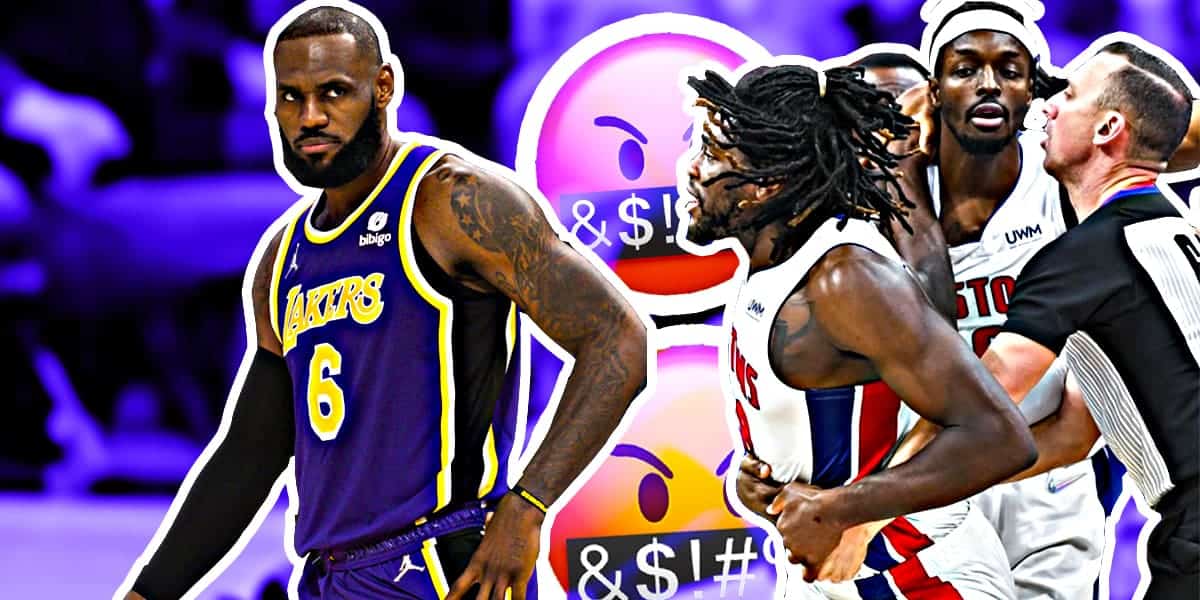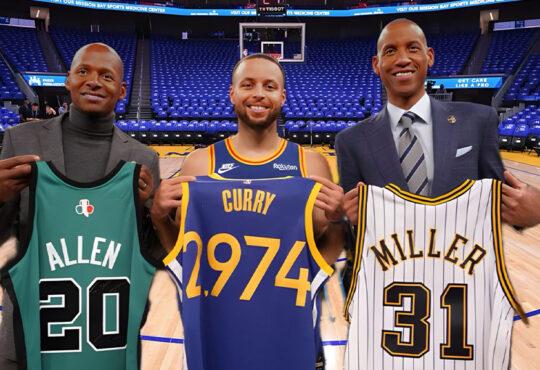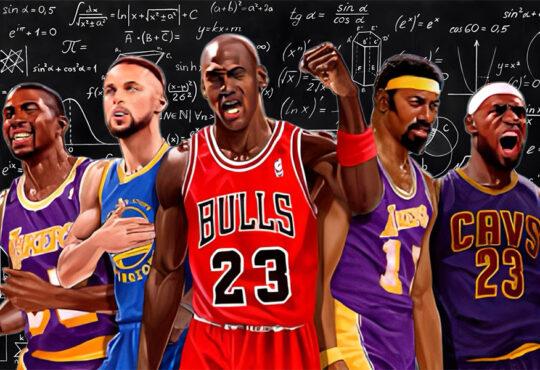
How Much Does an Ejection Cost in the NBA?
How much does an ejection cost in the NBA? In the NBA and most other basketball leagues, a player or coach is ejected from the game if he accumulates two technical fouls of an unsportsmanlike nature or Type 1 flagrant foul over the course of the game.
Players or coaches who commit a Type 2 flagrant foul or intentionally enter the stands are ejected summarily regardless of the number of technical fouls accumulated.
Ejected players/coaches must leave the court area for the remainder of the game, and must do so immediately, or else risk even heavier fines and suspensions.
In the NBA, an ejection will result in, at minimum, a $1,000 fine; an ejection for leaving the bench during a fight carries at least a one-game suspension as well.
In domestic games, refusing to leave after being ejected can result in a player being put on report. If being put on the report does not provide enough encouragement for a player to leave the court, the official may award the game to the opposing team, regardless of the score.
Players who incur 16 technical fouls in a single NBA season are automatically suspended for one game; an additional suspension is imposed for each increment of two thereafter.
Should a player receive the 16th technical foul in the last regular-season game, he will be suspended for the first game in the next season, unless if his team is in the playoffs, when he will be suspended for the first playoff game. In the playoffs, players are suspended if they receive seven technical fouls.
A significant rule change was made in 1981 whereby the NBA eliminated the ejection of a coach for three technical fouls caused by an illegal defense.
Also, in the NBA ejections and suspensions are not permissible if a technical foul is caused by an excessive timeout, delay of game, accidental departure from the coach’s box, the destruction of a backboard caused by a play, defensive hanging on any part of the basket unit to successfully touch a ball, or any remaining in the game after six fouls when a team is out of players because of fouls, injuries, and ejections under Rule 3, Section I, paragraph b. These technical fouls are referenced in the NBA rule book as “Non-Unsportsmanlike Conduct Technical Fouls”.
In games sanctioned by the International Basketball Federation (FIBA), a player is ejected for two technical fouls, unsportsmanlike fouls, or one disqualifying foul.
Technical fouls in FIBA include swinging of elbows without contact and flopping, which are not fouls in the NBA.
A coach can be ejected upon having incurred two coach technical fouls, or a combination of three bench and coach technical fouls. There is no separation regarding a “non-unsportsmanlike conduct technical foul,” as in the NBA, so two delays of game violations result in an ejection.
Fouling out
Basketball also features disqualification, also known as fouling out. A player who commits a certain number of personal fouls in a game (5 or 6 in most leagues), is removed from the game and is said to have “fouled out”. Unlike ejection, disqualification is not considered a punitive action but rather a natural consequence of a very physical sport with many instances of contact. Disqualified players are permitted to remain on the bench with the team (instead of being sent to the locker room, as with an ejected player) and are not subject to any further penalties (such as fines or suspensions); they can resume play in their next game.
The NBA’s all-time leader in disqualifications is Vern Mikkelsen, who was disqualified 127 times in 631 games. In the NBA, a technical foul (which does not count towards suspension or ejection) is also assessed for re-entering a game after fouling out of a game in emergency situations listed in Rule 3, Section I when a team is reduced to five players. Once that occurs, a technical foul is charged if a player remains in the game after his sixth or subsequent foul, or as the last player to foul out, re-enters the game in case of injury to an eligible player that must be removed.
The Most Ejected Players in NBA History?
Rasheed Wallace holds the record for the highest number of NBA ejections, with 29, and is also the player who conceded the highest numbers of technical fouls in a single NBA season, with 41.
Wallace was known for his intensity and unique personality, resulting in frequent confrontations with opponents and officials but also moments of humor.
During the 2008 Playoffs, Wallace went on an expletive-laced tirade following Game 5 of the Eastern Conference Finals against the Boston Celtics in which he lashed out at the officiating.
Wallace popularized the phrase “Ball don’t lie”, used when a player on the opposing team misses a free throw after a disputed call by the referees. One notable incident occurred in a December 2012, game against the Phoenix Suns when he was playing for the Knicks. After Wallace pushed Luis Scola and received a technical foul, Goran Dragić missed the technical free throw, to which Wallace responded by saying “Ball don’t lie.” Wallace then received a second technical, leading to his ejection. He played 1:25 before his ejection.
Regardless of his temper, Wallace was one of the best power forwards in his prime, making 4 All-Star appearances and winning the NBA Championship with the Detroit Pistons in 2004.
DeMarcus Cousins is second on the list with 14 ejections. The center is constantly on the move and is not receiving a lot of playing time so there has been a while since he was ejected last time. He has always been an emotional competitor, even during his lone season at Kentucky. Cousins even received an ejection from the bench during a Warriors game against the Knicks in October 2018 when he was not even playing and was in street clothes.
Four players are tied with 12 ejections with Draymond Green being the only one active among them.
The Golden State Warriors forward is known that he always speaks what he thinks and that it is often addressed to the officials. Regardless, Green has been one of the key players of the Warrior’s success in the past decade as he is doing all the dirty work for his team.
Kenyon Martin came out of Cincinnati and quickly made a name for himself with the New Jersey Nets. His ability to throw down tremendous dunks made him a household favorite. His fiery attitude also rubbed referees and opponents the wrong way. Constant jawing at refs earned him 12 ejections in his underrated NBA career.
One of the most decorated shooters in NBA history, Reggie Miller, was also a supreme agitator. Miller could knock down a shot from anywhere on the floor, but he also had the ability to get under the skin of some of the league’s greatest players, including a few dustups with Michael Jordan. He finished his career with 12 ejections.
Always down for a fight, Matt Barnes was one of the premier tough guys in the NBA. He once allegedly went to fight Derek Fisher while Fisher was the coach of a team because of a personal dispute, and infamously tried to rattle Kobe Bryant by feigning a pass into his face. These types of antics resulted in Barnes getting ejected 12 times, and he also finished his career with 32 flagrant fouls.
What Was the Worst Fine Handed Out Over an Ejection?
In 2006 at the Madison Square Garden, the Knicks and the Nuggets got into a brawl which was the first one after the infamous Malice at the Palace.
The fight began with a flagrant foul by Knicks guard Mardy Collins on Nuggets guard J. R. Smith in the closing seconds of the game. Several players joined in the confrontation and began to make physical contact. The fight briefly spilled into the stands, and also stretched to the other end of the court. All ten players on the floor at the time were ejected after the altercation was finished. When suspensions were announced, seven players were suspended without pay for a combined total of 47 games.
NBA Commissioner at the time, David Stern reacted with strict penalties for the players involved, stating, “It is our obligation to take the strongest possible steps to avoid such failures in the future”. Seven players were suspended for a total of 47 games, and the players lost in excess of US$1.2 million in salary. Each team was also fined US$500,000. Because Carmelo Anthony’s suspension was longer than twelve games, he was eligible to appeal to an arbitrator; however, Anthony eventually announced he would not attempt one, saying he did not “want to be a further distraction”. Anyway, Anthony lost more than $600K for the ejection and suspension.
Players with the most technical fouls
Karl Malone is the leader in all-time technical fouls with 332 partly due to the longevity of his career, as the second-leading scorer in NBA history enjoyed a 20-year career. A combination of complaining, trash-talking, and reckless use of his elbows saw Malone pick up more technical fouls than anybody else, and the second most personal fouls of all time as well. Still, he is remembered for his mid-range jumpers and probably the biggest muscles in the 1990s NBA.
As entertaining as Charles Barkley is on TV today, his antics and his mouth often got him into trouble on the court. Barkley was adept at trash-talking, and he was very animated with both opposing players and the officials. He would even put his fingers in their face, once cutting the nose of referee Jack Nies with his fingernail, earning him one of his 329 technical fouls. He even had numerous situations where he cussed out referees on national television and got away with it, actions that would never be allowed in today’s game.
The above-mentioned Rasheed Wallace takes third place on this list with 317 technical fouls.
Gary Payton was remembered for his amazing defensive ability but he was just as notorious of a trash talker in his days—even once telling a player, “You won’t be in the league next year.” The Glove was constantly talking to his opponents to try to get under their skin, but he was just as vocal towards officials and had a penchant for reacting very angrily towards them when calls didn’t go his way. In his career, he got T’d up 250 times.
Notable NBA fines
Vladimir Radmanovic is the player with the largest fine amount which is $500,000. He earned this fine for injuring his shoulder while snowboarding, which is in direct violation of his contract, not the snowboarding per se, but that he must keep himself healthy and safe in the off-season.
The most fined coach, for both the number of fines and total amount fined, is Phil Jackson for a total of $380,000 and a total of 8 fines. Coaches are most often fined for criticizing the refs. Jackson, Larry Brown, and Doc Rivers are the top 3 most fined coaches, Brown with 7 fines totaling $117,500 and Rivers with 6 fines totaling $115,000. These 3 coaches together account for 23 of the 54 fines given to coaches.
The largest team fine in NBA history is from 2000 to the Minnesota Timberwolves for $3.5 million. They were caught trying to secretly go over the salary cap for the year. This is also the largest fine amount that has ever been issued in the League.
The most fined owner is Mark Cuban, for 20 fines totaling $2,240,000; alone this is about 10% of all fines since 2000. Cuban is not only the most fined owner, but he is also the most fined individual person in NBA history, in terms of both total number of fines and total amount fined. His largest fine to date, $600,000 was for saying that the Dallas Mavericks should tank for the rest of the 2017-18 season. Cuban says every time he gets fined, he matches that amount and donates it to a charity of his choice.







